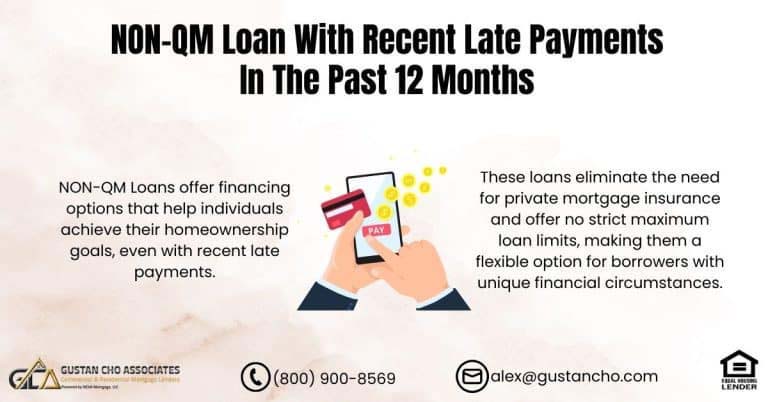Cash to Close and Seasoned Funds for Closing: Your 2024 Guide to a Smooth Home Purchase
When you’re ready to buy a home, two terms you’ll hear often are cash to close and seasoned funds for closing. These are important steps in the mortgage process, and understanding them will make your journey to homeownership a lot smoother.
In this guide, we’ll break down what cash to close and seasoned funds are, why they’re important, and how to make sure your funds are ready when it’s time to close. Whether you’re buying your first home or refinancing, this information will help you make sure there are no last-minute surprises. Let’s dive in!
What Is Cash to Close?
Cash to close is the total amount of money you’ll need to bring to the closing table to complete your home purchase. You’ll get an estimate of this amount early in the mortgage process. Still, it’s important to understand that it can change slightly by closing day.
Cash to close typically includes:
- Down Payment: This is your initial contribution toward the purchase of the home.
- Closing Costs: These are fees and expenses like lender fees, title insurance, and appraisal fees.
- Prepaid Costs: This may include your first few months of property taxes and homeowners insurance.
Here’s how to keep track of cash to close:
- Loan Estimate Document: Within three days of applying for your mortgage, you’ll receive a Loan Estimate from your lender. This document includes an estimate of your cash to close based on the initial terms of your loan.
- Closing Disclosure: Closer to closing day, you’ll receive a Closing Disclosure, which provides the final cash-to-close amount. Compare it with your Loan Estimate, and check for unexpected fees or changes.
Pro Tip: If there are any questions about your cash-to-close total, do not hesitate to ask your lender for a comprehensive breakdown!
Ready to Close Your Mortgage? Let’s Ensure Your Cash to Close and Seasoned Funds Are Ready!
Contact us today to learn how you can prepare and avoid delays in your home loan closing.
Why Are Seasoned Funds Important for Cash to Close?

Seasoned funds reassure lenders because they show you have steady control over your finances, making you a more reliable borrower. Think of seasoned funds as a way for lenders to confirm that the money in your account is genuinely yours and not borrowed or obtained from a risky source.
Here’s why it matters:
- Financial Stability: Seasoned funds show that you have a stable financial base and aren’t relying on last-minute loans to cover your cash to close.
- Reduced Risk: Lenders view borrowers with seasoned funds as lower risk, as it reduces the chance of default.
Acceptable Sources of Cash to Close and Seasoned Funds for Closing
Your cash to close can come from several sources, but they must be properly documented. Lenders look for these primary sources:
- Direct Deposits from Your Employer: Direct deposits of paychecks into your account are ideal. They are easily traceable and require no additional documentation.
- Savings and Investment Accounts: Money from personal savings or investments is usually acceptable, but you must provide statements showing that the funds have been in your account for at least 60 days.
- Gift Funds: Many buyers receive help from family members or close friends. If you’re using gift funds, make sure the donor provides the necessary documentation to avoid issues (we’ll explain more about this below).
- Other Documented Sources: These can include funds from selling personal property or other assets, as long as you have a clear paper trail showing their origin.
Important: Funds not from these sources may not qualify, so it’s critical to work closely with your lender to ensure all funds meet requirements.
Understanding Gift Funds and How They Work
Gift funds can be a great way to cover your cash to close. However, lenders require strict documentation to verify that gift funds are truly a gift and not a loan. Here’s how to make sure your gift funds are ready for closing:
- Gift Letter: Your donor (the person giving you the gift) must sign a gift letter provided by your lender. This letter states that the gift funds do not need to be repaid.
- Proof of Transfer: Keep records of the transfer, including a copy of the check (if applicable), deposit slip, and an updated bank statement showing the gift deposit.
- Bank Statements from the Donor: Certain lenders might request that the donor provide bank statements covering the past 30 days. This documentation must confirm that the funds have been in their account for at least 30 days. This requirement is important because it demonstrates that the funds were not hastily borrowed before the transaction.
Gift funds are widely accepted for down payments and closing costs, but they generally cannot be used for reserves—the funds left in your account after closing. Reserves usually need to be from your own funds.
What Not to Do: Avoiding Cash and Undocumented Funds
Cash on Hand: If you have cash in a safe at home or somewhere else, avoid using it for your cash to close. Lenders cannot verify cash deposits without a clear paper trail. To avoid complications, ensure that you deposit any cash into your bank account at least 60 days before submitting your mortgage application.
Unsecured Loans and Cash Advances: Avoid using payday loans, credit card advances, or other short-term loans. These can signal financial distress and may jeopardize your mortgage approval.
Quick Tip: Plan ahead! If you’re saving up for your cash to close, start moving funds into your bank account at least a few months before you apply.
Large and Irregular Deposits: What to Watch For
Lenders carefully review 60 days of bank statements leading up to your loan application, so be mindful of large or unusual deposits. Here’s how to avoid issues:
- Defining Large Deposits: Generally, lenders consider any deposit greater than 10% of your monthly income to be “large” and will ask you to explain where it came from.
- Documentation: If the deposit is legitimate and comes from a verifiable source, such as a tax refund, keep any related paperwork and provide it to your lender.
- Irregular Deposits: Lenders look for unexpected deposits that could signal last-minute borrowing. A documented explanation and paper trail are essential if you want these funds used for closing.
Preparing Your Cash to Close: Tips and Strategies for 2024
Getting ready for closing isn’t just about gathering funds. Here’s a quick checklist to help ensure a smooth process:
- Start Tracking Your Funds: Watch your bank account activity at least three months before closing. Avoid unusual transfers or big deposits without a paper trail.
- Avoid New Debts or Financial Changes: Lenders will check your credit right before closing, so avoid new loans or credit inquiries.
- Consult Your Lender Early: Talk to your lender about acceptable sources of funds and whether your cash-to-close amount is on track. It’s better to resolve issues early rather than risk closing delays.
Need Help with Cash to Close and Seasoned Funds? We’re Here to Guide You!
Reach out now to get expert guidance on managing your cash to close and seasoned funds for a smooth mortgage process.
Getting Your Final Cash to Close Estimate
Just before closing, your lender will send a Closing Disclosure document. This provides the final amount of cash to close based on the latest terms of your loan. Compare this amount to your initial Loan Estimate and check for any changes.
If you have inquiries or see inconsistencies, talk to your lender or loan officer immediately. They can clarify any modifications and help you feel assured about the ultimate cash-to-close figure.
Get Started Today
Understanding cash to close and seasoned funds for closing is essential for a smooth home-buying process. Preparing your funds in advance, documenting their sources, and working closely with your lender can make your path to homeownership easier and stress-free. If you need assitance, contact a loan officer to help you navigate the process and make sure you’re prepared for a successful closing in 2024.
Contact Us Today to get started on your journey to homeownership!
Frequently Asked Questions About Cash to Close and Seasoned Funds for Closing:
Q: What Does “Cash to Close” Mean?
A: Cash to close is the total amount of money you need to bring to closing day to complete your home purchase. This includes your down payment, closing costs, and any other fees.
Q: What are “Seasoned Funds,” and Why do I Need Them for Closing?
A: Funds are considered seasoned when they have been in your bank account for at least 60 days. Lenders stipulate seasoned funds to verify that the money is yours and hasn’t been recently borrowed. Presenting cash to close along with seasoned funds demonstrates to lenders that you are financially secure.
Q: Can I Use the Cash I’ve Saved at Home as Part of My Cash to Close?
A: No, lenders don’t accept cash saved outside a bank because it can’t be documented. To use it for cash to close and seasoned funds for closing, it should be in your bank account for at least 60 days before applying.
Q: Why is it Important to Document All Sources of Cash to Close?
A: Lenders need a clear record of where your funds come from to confirm they’re legitimate. For cash to close and seasoned funds for closing, lenders accept sources like your paycheck, savings, or gifts, as long as you provide the necessary paperwork.
Q: Can I Use Gift Funds for Cash to Close?
A: Yes, gift funds are allowed, but they must be documented. Your donor must provide a gift letter, proof of transfer, and sometimes bank statements to confirm the gift funds qualify as seasoned funds.
Q: What Happens if I Make a Large Deposit Close to Closing Day?
A: If you make a large deposit—generally over 10% of your monthly income—your lender will ask for proof of where it came from. Documenting large deposits ensures they’re legitimate cash to close and seasoned funds for closing.
Q: How Can I Avoid Issues with My Cash to Close Funds?
A: Start tracking and preparing your funds a few months before you apply for a loan. Avoid last-minute loans or moving cash between accounts, so your cash to close and seasoned funds for closing are well-documented and meet lender requirements.
Q: Can I Use Money from a Recent Loan as Part of My Cash to Close?
A: No, lenders don’t accept funds from unsecured loans, payday loans, or cash advances as cash to close. They want to see that you have seasoned funds for closing to ensure financial stability.
Q: What Should I do if My Cash-to-Close Amount Changes on Closing Day?
A: Your lender will provide a Closing Disclosure shortly before your closing date, outlining the final cash-to-close amount. Review it alongside your original Loan Estimate, and if you notice any discrepancies, request an explanation from your lender.
Q: Why do Lenders Care About “Seasoned Funds” for Closing?
A: Seasoned funds show lenders that your money is stable and hasn’t been borrowed last minute. This makes you a safer borrower because it shows that your cash to close and seasoned funds for closing are legitimate and reliable.
This blog about “Cash To Close and Seasoned Funds For Closing by Borrower” was updated on November 7th, 2024.
Concerned About Cash to Close or Seasoned Funds for Your Mortgage? Let’s Work Together!
Contact us now for help preparing your cash to close and seasoned funds.










i have cash under pillow i need to bring it out for buy home whats the right way to add deposit in bank to make it home buyer or loan officer.
Deposit it in a bank account. Once it has been seasoned for two months, it becomes qualified assets and you can use it towards the down payment and closing costs for your home purchase.
I borrowed money to consolidate my credit cards and personal loans. After paying them all off, I had $20,000 from the loan left over in my savings account. it has been there for 5 months, untouched. Will it be considered seasoned and secured or will it be questioned as I have the loan I am paying off. My credit score is in the very high 700’s and even with a mortgage my debt ratio will be in the low to mid 30% range.
As long as you have the funds were in your bank account for at least sixty days, it is considered seasoned.
Thank you. I also won’t have to prove where it came from? Your help is appreciated.
Correct. Lenders only want to see 60 days of bank statements. It is just the irregular and/or large deposits that are questioned and need to be sourced. Deposits prior to that does not matter. For example, if a homebuyer has tons of unsourced cash that need to be used for the down payment on a home purchase, they need to deposit the cash in the bank account and wait sixty days for it to self source. Therefore, you have absolutely nothing to worry about.
I appreciate your help–just concerned that the loan is also on my credit report and I wonder if they will ask what was the personal loan for.
This is excellent, easy to follow information. Most explanations on this subject are more confusing than clarifying.
I am like the other commenter, hoping the loan I took out months ago is not questioned to be part of my down payment. I have 90 days of bank statements with the balance in my bank account and the loan is current with my debt ratios very low.
You only need sixty days of bank statements.
hello, Im conditionally approved. One of the conditions was that I made a big cash deposit into my bank account but it was an honest mistake as a first time home buyer. I still have verified funds for cash to close, down payment and reserves for 3 mortgage payments. Can I still get approved even though I can’t source the big cash deposit? In addition, I already sent the underwriters an explanation regarding the cash deposit but couldn’t document it.
Yes, you can still get approved with large deposits but cannot use it as verified funds unless the underwriter can source it.
Ok, thank you so much! This really cleared things up for me! I was really scared about that big mistake I did.
Thanks for the article. It’s very helpful! I have a question. If I have large unsourced cash deposited into my bank account within 60 days, and then I applied for the mortgage. But the closing date is 60 days after the deposit. Cloud I get approved in this case? Since the money should be seasoned when closing.
As long as you have deposited the money and the money has been seasoned longer than sixty days, you are fine.
Hello, My spouse is currently applying for a mortgage without me (i’m waiting for student loans to come out of deferment and so cannot be included without substantially bringing down the mortgage amount since we don’t have the IBR payment calculated yet – we know mine will be similar to hers though). Anyway, I wanted to take out a personal loan for my wife that I can give to her as a gift and that I pay off myself over the next year. Our finances are separate, so it is only my bank account that would be touched. Is this acceptable and possible even though I will have had the funds for less than 30 days? Time isn’t on our side for this one because of our moving timeline.
We can work this out. However, before you do anything, please reach out to us at gcho@gustancho.com. Looking forward to working with you and your wife.
We are conditionally approved for new construction. We went through underwriting and we are just waiting for the home to be built
In 4-6 months. If we are sending in our bank statements monthly, how is seasoning handling if we get a personal loan today and closing isn’t for at least 4 months? Would this kill the approval?
The monthly payment on the personal loan will be used to calculate your debt to income ratio. I would check with your loan officer.
I’m currently in the underwriting phase and a relative has just offered to help rebuild some of the savings I’ll be using to cover my closing costs. I believe I’m understanding correctly that if I deposit that money in my account before closing, a gift letter and accompanying details would need to accompany it.
Am I better off just holding that money aside until a few days after I close, and then depositing it in my account after the underwriters have finished their work and everything is finalized and done? My relative is elderly and not technologically inclined and asking them to provide and send proof of withdrawal/deposit/the letter could be a big ask of effort if it could be avoided by just sitting on the money for a bit, instead.
Thanks for your input!
Any gift funds need to be documented. From what you are saying, if you do not need the gift funds for closing, then hold off until you have closed. You can deposit it now but cannot use those as part of qualified funds to use it for the down payment and/or closing costs.
We just signed a new construction contract. We had $10000 for earnest money but the builder wanted $30000 because the house is $600000, so we borrowed $20000 from my husband’s like of credit. My grandparents intend to gift our down payment and we were told that we get the earnest money back, but now we fear that we messed up our conditional approval because of this loan. Our debt to income ratios are still low, but want to know what happens with the earnest money deposit. Also, since our builder will have had the earnest money for six months by the time the house is finished, am I overthinking? Is the proof of wire to the builder and then it sitting there six months enough?
As long as the funds are seasoned over two months, it does not matter. Worst scenario, the monthly payment will hit you on the debt to income ratio calcualtions
What if you have 10,000 in savings in preparation to buy the rental home that you live in, which will be for sale soon. You aren’t sure exactly when that soon will be. You are nervous due to worldly goings on and would like to withdraw that money. You would have the records of it being in savings for months, along with the withdrawal slip. Could you then consider it documented and it not have to be seasoned when the time comes to actually apply for said mortgage and you redeposit it?